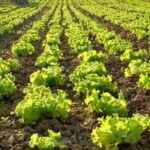Perlite is a popular additive in gardening, known for its ability to improve soil aeration and drainage. But is perlite okay for vegetable gardens? In this article, we will explore the use of perlite in vegetable gardening, including its benefits and potential concerns.
Understanding what perlite is and how it functions in gardening is essential before using it in vegetable gardens. Perlite is a naturally occurring mineral that is expanded through high heat to create lightweight, porous particles. This unique structure improves soil aeration, drainage, and moisture retention, making it a valuable addition to various types of gardens.
When it comes to vegetable gardens specifically, perlite can play a crucial role in improving soil quality and promoting healthy plant growth. By addressing common misconceptions about perlite and addressing potential concerns, gardeners can make informed decisions about whether to incorporate this additive into their vegetable gardening practices.
With proper guidance on choosing the right type of perlite for vegetable gardens and utilizing it effectively in seed starting and transplanting, gardeners can harness the benefits of perlite for their crops’ success.
Benefits of Perlite in Vegetable Gardens
Perlite is a versatile and lightweight mineral that is commonly used in gardening to improve soil conditions. When it comes to vegetable gardens, perlite plays a crucial role in enhancing soil aeration, drainage, and moisture retention.
One of the main benefits of using perlite in vegetable gardens is its ability to improve soil structure. Perlite particles are porous, which allows for better air circulation in the soil. This is especially important for vegetable plants, as adequate oxygen in the root zone is essential for their growth and development. Additionally, the presence of perlite in the soil helps prevent compaction, which can hinder root growth and water penetration.
In addition to enhancing soil aeration, perlite also contributes to better drainage in vegetable gardens. Poorly drained soil can lead to waterlogged conditions, which can harm the roots of vegetable plants. By adding perlite to the soil mix, excess water is able to drain more efficiently, reducing the risk of waterlogging and allowing plant roots to access the necessary oxygen and nutrients they need for healthy growth.
Furthermore, perlite aids in moisture retention in vegetable gardens. While perlite promotes good drainage, it also has the unique ability to hold onto moisture when present in a growing medium. This means that during dry periods, perlite can help ensure that the soil retains enough moisture for the vegetables to thrive. Its ability to strike a balance between drainage and moisture retention makes it an ideal addition to vegetable garden soil.
| Benefit | Explanation |
|---|---|
| Improved Soil Structure | Perlites enhance air circulation and prevent compaction. |
| Better Drainage | Reduces the risk of waterlogging and allows efficient water drainage. |
| Moisture Retention | Helps maintain adequate moisture levels during dry periods. |
Concerns and Misconceptions
There are several common misconceptions about the use of perlite in vegetable gardens, as well as potential concerns that some gardeners may have. Addressing these concerns and misconceptions is important in understanding whether perlite is okay for vegetable gardens.
Myths About Perlite
One common misconception about perlite is that it can be harmful to plants or the environment. Some gardeners worry that perlite particles may be ingested by plants or pose a risk to the surrounding ecosystem. However, it’s important to note that perlite is non-toxic and inert, meaning it will not react with other substances in the soil or release any harmful chemicals. Additionally, perlite is sterile, so it does not introduce any pathogens or pests into the garden.
Concerns About Water Retention
Another concern that some gardeners may have is related to water retention. There is a fear that using perlite in soil may lead to over-drying of the root zone, especially in hot and dry climates.
While it’s true that perlite improves drainage and aeration, thus reducing water retention, proper watering practices can help mitigate this concern. By monitoring moisture levels and adjusting watering frequency accordingly, gardeners can ensure that their vegetable plants receive adequate hydration even when perlite is present in the soil.
Environmental Impact
Some gardeners may also worry about the environmental impact of using perlite in their vegetable gardens. It’s important to consider whether mining and processing perlite has detrimental effects on the environment. While it’s true that perlite mining occurs in certain regions, many suppliers are committed to sustainable practices and adhere to strict environmental regulations.
Furthermore, because perlite is lightweight and expands when heated, transportation costs are lower compared to heavier amendments like sand or gravel, which reduces carbon emissions from shipping. By choosing reputable suppliers who prioritize sustainability, gardeners can minimize any potential environmental impact of using perlite in their gardens.
Choosing the Right Perlite for Vegetable Gardens
Perlite is a versatile and widely used growing medium in gardening, and choosing the right perlite for your vegetable garden is essential for optimal plant growth. When selecting perlite, it’s important to consider the grade and type that will best suit the specific needs of your vegetable garden.
One of the primary considerations when choosing perlite for vegetable gardens is the grade of the particles. Coarse-grade perlite is ideal for larger containers and outdoor gardens, as it provides better aeration and drainage. On the other hand, fine-grade perlite is suitable for starting seeds and transplanting seedlings due to its smaller particle size.
In addition to considering the grade of perlite, it’s important to look at the type of perlite available. Horticultural grade perlite is commonly used in vegetable gardens as it has been specially processed to ensure it is free from contaminants and safe for use with plants. It also has a neutral pH level, making it suitable for a wide range of vegetables.
When choosing perlite for your vegetable garden, be sure to select a product that is specifically labeled for horticultural or gardening use. This will ensure that you are getting a high-quality product that is safe and beneficial for your plants. Taking these factors into account will help you select the appropriate grade and type of perlite for your specific vegetable garden needs.
| Perlite Considerations | Benefits |
|---|---|
| Coarse-grade vs. fine-grade | Better aeration and drainage vs. suitable for starting seeds and transplanting |
| Horticultural vs. industrial grade | Safe and free from contaminants vs. not specifically processed for gardening use |
Using Perlite in Seed Starting and Transplanting
Improved Drainage and Aeration
When starting seeds or transplanting seedlings in a vegetable garden, it is important to provide optimal conditions for their growth. Perlite can play a key role in this process by improving soil drainage and aeration. Its lightweight nature allows for better air circulation within the soil, preventing waterlogging and ensuring that roots have access to oxygen.
Enhanced Moisture Retention
In addition to improving drainage and aeration, perlite also helps with moisture retention in the soil. This can be particularly beneficial during the germination of seeds, as consistent moisture levels are essential for successful sprouting. By incorporating perlite into the growing medium, gardeners can ensure that the soil remains evenly moist without becoming waterlogged.
Preventing Compaction
Another advantage of using perlite when starting seeds or transplanting seedlings is its ability to prevent soil compaction. As young plants develop their root systems, compacted soil can restrict healthy growth. The addition of perlite helps keep the soil loose and friable, providing an ideal environment for roots to establish themselves and access nutrients efficiently.
By utilizing perlite in the seed starting and transplanting process, gardeners can create an optimal growing environment for their vegetable gardens, promoting healthy root development and overall plant growth.
Mixing Perlite With Soil and Compost
When it comes to improving soil quality and providing the best growing conditions for vegetable gardens, mixing perlite with soil and compost can be a beneficial practice. Perlite is a lightweight, porous material that is often used in gardening to improve soil aeration, drainage, and moisture retention. By incorporating perlite into the soil and compost mix, gardeners can create an environment that promotes healthy root development and overall plant growth.
To effectively mix perlite with soil and compost for your vegetable gardens, follow these simple steps:
1. Choose the right grade of perlite: When selecting perlite for your vegetable garden, consider the size of the particles. Coarse-grade perlite is ideal for improving drainage in heavier soils, while fine-grade perlite is better suited for seed starting mixes.
2. Prepare the soil and compost mixture: Begin by mixing equal parts of topsoil or potting mix with compost in a large container or wheelbarrow. This will provide the base for your vegetable garden bed.
3. Add perlite to the mix: Once the soil and compost are thoroughly combined, add perlite to the mixture at a ratio of approximately 1 part perlite to 4 parts soil and compost. Use a shovel or garden fork to evenly distribute the perlite throughout the mixture.
4. Blend thoroughly: To ensure that the perlite is fully incorporated into the soil and compost, gently blend the mixture using a trowel or garden rake. Be careful not to overmix, as this may compact the soil.
5. Fill your planting containers or garden beds: After mixing perlite with soil and compost, use this mixture to fill your planting containers or prepare your vegetable garden beds. The added perlite will help promote better drainage and aeration for your plants.
By following these steps for mixing perlite with soil and compost, you can create an optimal growing environment for your vegetable gardens, promoting healthy plant growth and bountiful harvests.
Maintenance and Care
Maintaining and caring for vegetable gardens with perlite is essential to ensure the health and productivity of your plants. Proper watering and fertilization are key components of garden maintenance, and incorporating perlite into the soil can help optimize these processes.
Here are some tips for maintaining and caring for vegetable gardens with perlite:
Watering:
- Use a soaker hose or drip irrigation system to deliver water directly to the base of plants, minimizing water waste.
- Check the moisture level of the soil regularly, especially during hot and dry weather.
- Perlite helps improve soil drainage, reducing the risk of overwatering and waterlogged roots in vegetable gardens.
Fertilization:
- Choose a balanced fertilizer specifically formulated for vegetable gardens.
- Follow the instructions on the fertilizer package for application rates and frequency.
- The improved aeration and nutrient retention provided by perlite can enhance the effectiveness of fertilizers, promoting healthy growth in vegetable plants.
By incorporating perlite into your vegetable garden soil and following these maintenance and care tips, you can create an optimal environment for your plants to thrive. Remember to monitor your garden regularly, adjust watering and fertilization as necessary, and enjoy the benefits of using perlite in your vegetable garden.
Conclusion
In conclusion, perlite is a valuable addition to vegetable gardens, offering numerous benefits such as improved soil aeration, drainage, and moisture retention. Despite some misconceptions and concerns about its use, when chosen and used correctly, perlite can greatly enhance the health and productivity of vegetable plants. Selecting the right grade and type of perlite for specific garden needs is crucial, as is properly mixing it with soil and compost.
When starting seeds or transplanting seedlings in vegetable gardens, perlite can play a crucial role in promoting healthy root growth and reducing the risk of waterlogged soil. Its lightweight nature also makes it easy to work with during planting and maintenance. By following proper maintenance and care tips for perlite-enhanced vegetable gardens, such as mindful watering and appropriate fertilization, gardeners can maximize the benefits of using perlite while minimizing any potential drawbacks.
All in all, when used responsibly and in conjunction with other gardening practices, perlite is indeed okay for vegetable gardens. The benefits it offers in terms of improving soil structure and plant growth are undeniable. With careful consideration of how to integrate it into gardening practices, perlite has the potential to contribute positively to the success of vegetable gardens.
Frequently Asked Questions
Can I Use Perlite in My Vegetable Garden?
Perlite can be used in vegetable gardens to improve soil aeration and drainage. It is especially beneficial for heavy, compacted soils, helping to create a healthier growing environment for vegetables.
What Plants Don T Like Perlite?
Some plants, like succulents and cacti, may not thrive in soil containing perlite because they prefer well-draining but moisture-retentive soil. Too much perlite can lead to overly dry conditions for these plants.
Do Raised Garden Beds Need Perlite?
Raised garden beds can benefit from the addition of perlite, as it can help improve the soil structure by increasing aeration and drainage. This is especially important for raised beds where the soil may become compacted over time.

If you’re looking to get into vegetable gardening, or are just looking for some tips on how to make your current garden better, then you’ve come to the right place! My name is Ethel and I have been gardening for years. In this blog, I’m going to share with you some of my best tips on how to create a successful vegetable garden.





